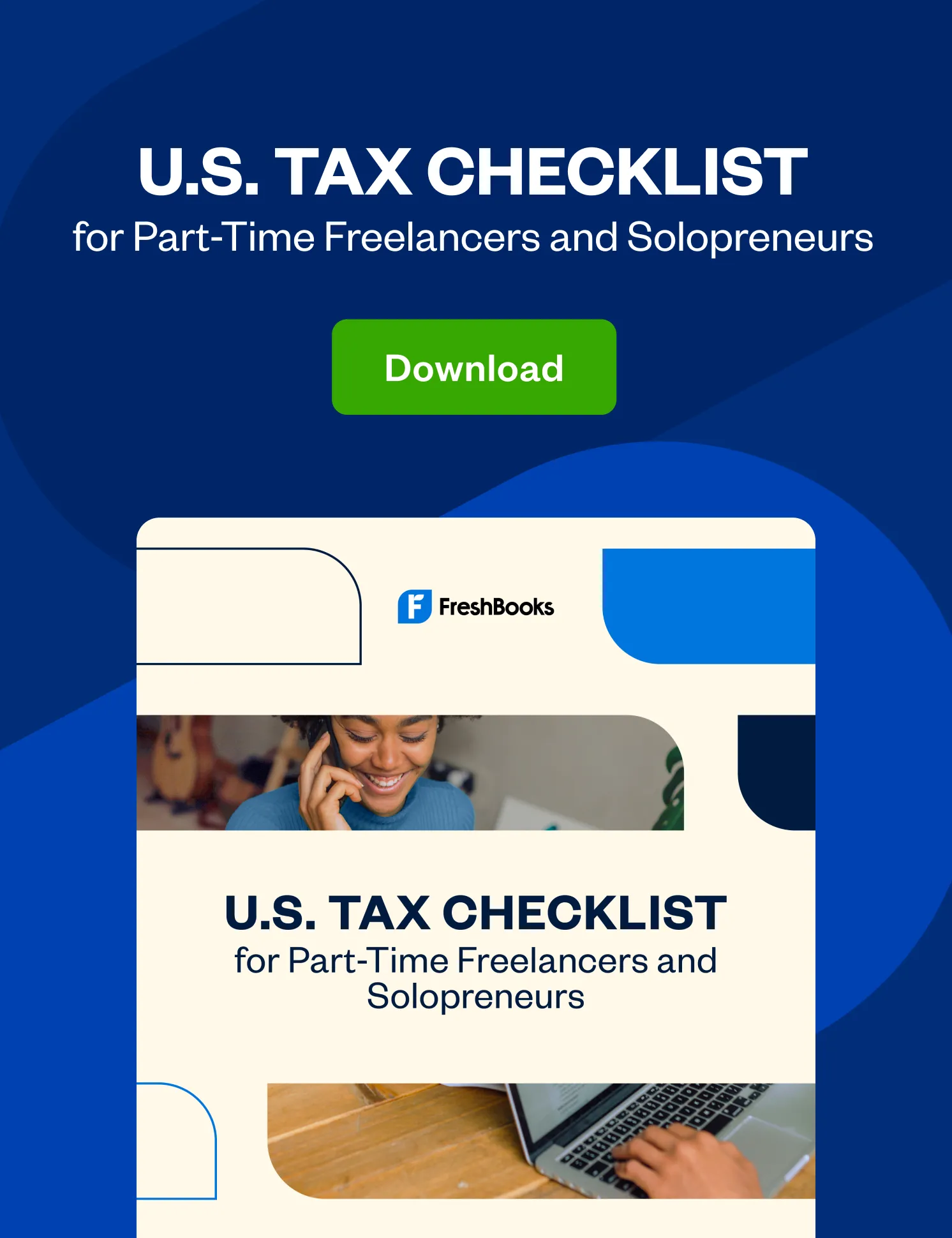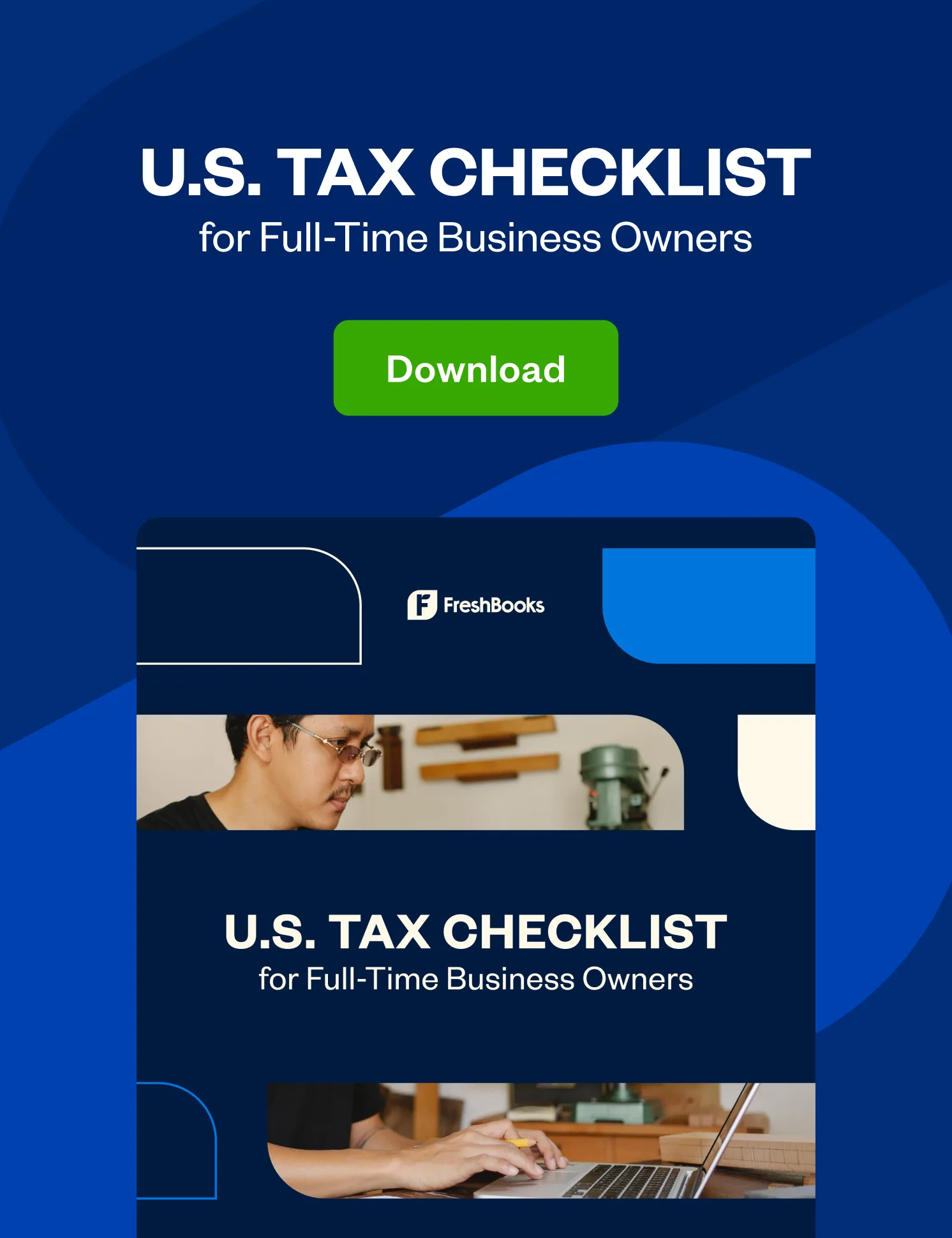Filing your taxes right under the wire or even after the deadline? Don't panic. Follow these tips to stay compliant with the IRS.

Even if you’ve procrastinated, there’s still time to prepare and file your tax return with these 10 tips for last-minute tax filers.
Table of Contents
Understanding the Tax Deadline
Typically, the tax deadline falls on April 15 each year. However, if April 15 lands on a weekend or a federal holiday, the deadline is extended to the next business day, often April 18. Mark this date on your calendar and plan accordingly to ensure you have all the necessary documents and information ready to file your tax return on time. Missing the tax deadline can result in penalties and interest, so it’s essential to be prepared and avoid any last-minute rush.
1. Get Your Financials in Order… Pronto!
If you’ve been diligently tracking income and expenses all year, you should be in good shape to file your tax return and get the best tax refund possible. All you need to do is print reports for your tax preparer. However, if you’ve neglected your monthly bookkeeping, it’s time to get your financials and tax documents in order.
Make sure you’ve recorded all revenue, entered all expenses, and kept copies of all receipts (either paper or electronic) in case your return is selected for an audit. If taxpayers are unable to meet the tax filing deadline, they can request an automatic tax extension from the IRS by using Form 4868.
Whatever you do, don’t turn over a shoebox full of receipts and bank statements to your accountant. They’ll likely charge a higher hourly rate for the clean-up work in order to file your tax return. If you’ve maintained your financials every month, your tax preparer’s job will be easier (and cheaper).
2. Make Sure You Have All 1099s for Your Tax Return
If you’re a freelancer or independent contractor, make sure you have all 1099s you need from the clients and customers you worked for during the year. The government cross-checks the 1099s it receives on your behalf with the amount of income you report. If you underreport your income, you’ll hear from the IRS.
Keep in mind that businesses are not required to send you Form 1099 if you earned less than $600 during the year, but that income should still be reported on your tax return. Using tax preparation software can help ensure all necessary documents are accounted for and streamline the filing process.
3. Secure the Biggest Allowable Deduction
Certain tax deductions (also called tax write-offs), like eligible business or personal expenses, lower your taxable income, which can potentially lower your tax bracket and reduce the amount of tax you pay. So, the more tax deductions you’re eligible for, the better! To take advantage of tax deductions, you’ll need to fill out and submit a Schedule C (Form 1040) along with your tax return. Certain deductions are contingent upon your adjusted gross income (AGI) levels, and it’s important to calculate your AGI accurately to maximize your deductions.
For example, If you drive your personal vehicle for business, make sure you get the biggest allowable deduction to reduce your tax payment. Even if you owe money, deductions can reduce how much you owe. The IRS gives you 2 choices:
- A standard deduction per mile the car was driven for business (worth 65.5 cents per mile for 2023)
- Actual expenses, including gas insurance, lease payments, and maintenance, multiplied by the percentage of business use
If you use the actual expense method in the first year you use your vehicle for business, you must use that method for the life of the vehicle. But if you use the standard mileage rate the first year, you can switch between that and the actual expense method each year. If you have a choice, calculate both methods and use whichever gives you a larger deduction.
4. Make Retroactive Retirement Plan Contributions
In many cases, you may be able to make deductible retirement plan contributions all the way up to the tax-filing deadline.
If you want to put away more money for retirement, you may be able to contribute to a SEP-IRA—a retirement account geared toward small business owners and the self-employed. If you apply for an extension of time to file your return, you have until the extended due date in October to make your deductible SEP-IRA contribution. Payroll software can help manage retirement plan contributions and ensure accuracy in your tax submissions.
5. Contribute to a Health Savings Account
If you’re covered by a high-deductible health plan—for the calendar year 2025 defined as a minimum deductible of $1,650 for an individual or $3,300 for a family—you can also deduct contributions made to a Health Savings Account (HSA).
You have until the tax filing deadline to make a deductible contribution. For 2025, you can contribute up to $4,300 to an HSA if you have self-only coverage or $8,550 for family coverage. People aged 55 or older can make an additional $1,000 “catch-up” contribution.
6. Don’t Rush and Leave Room for Error
With the tax deadline looming, it’s tempting to rush through preparation for tax returns (or pressure your tax preparer to rush it for you), but that can be a costly mistake. Rushing often leads to missing deductions, typos, and math errors that may delay your tax return, cost you money, necessitate filing an amended tax return, or even increase the likelihood that your tax return will be selected for audit.
Carefully check your return, including the spelling of any names. Check Employer Identification Numbers (EIN) and Social Security numbers (SSN) to ensure you didn’t transpose any numbers. Double-check that all income and expenses are properly included. If you catch a mistake, you have time to correct it before filing. Filing taxes online can help minimize errors and ensure a more accurate tax return.
7. Won’t Make the Tax-Filing Deadline? File an Extension
If you just aren’t ready to file by the deadline, you can get an automatic extension (6 months). Electronically file your extension request for free using IRS Free File. If you owe tax, you can request your extension when you make a payment with IRS Direct Pay. Just choose “extension” as your reason for payment.
You can also request an extension by mailing Form 4868 (Form 7004 for partnerships, some LLCs, and corporations). If you decide to mail your extension, be sure to mail the form and pay any estimated tax by the original tax deadline. It’s a good idea to send a certified return receipt, so you have proof of mailing.
8. Even With an Extension, You Have to Pay Taxes Owed
Keep in mind that an extension gives you extra time to file, not extra time to pay. Etimate how much you owe and pay that amount by the due date, or face late payment penalties.
If you can’t come up with an accurate estimate of how much you owe, it’s a good idea to err on the side of overpaying. You can always have that overpayment refunded or applied to next year’s estimated taxes.
9. Payment Options
If you find that you owe taxes, there are several convenient payment options available. You can pay your tax bill online, by phone, or by mail. One of the most secure and efficient methods is using IRS Direct Pay, which allows you to pay directly from your bank account. If you’re unable to pay the full amount by the due date, you can set up a payment plan with the IRS to spread out your payments. It’s crucial to pay your tax bill on time to avoid penalties and interest. Choose the payment method that works best for you and ensure your payment is processed before the deadline.
9. For Speed, Submit an E-File
The IRS encourages taxpayers to e-file returns because electronically submitted returns are generally more accurate. The software can help you avoid math mistakes, and the IRS e-file system flags common errors and kicks back returns for correction.
If you’re expecting a refund, e-filing with tax software can also help you get your refund faster, especially if you combine e-filing with having your refund direct deposited into your bank account. When you combine e-filing and direct deposit, the IRS says it processes 90% of refunds within 21 days.
Tax software programs can facilitate e-filing and help ensure accuracy in your tax return.
10. Avoid Common Mistakes
Filing your tax return accurately is essential to avoid delays and potential penalties. One common mistake is providing incorrect or incomplete information. Double-check your social security number, address, and other personal details to ensure they are correct. Another frequent error is failing to report all sources of income, including freelance work and investments.
Math errors can also cause issues, but these can be easily avoided by using reliable tax software or working with a tax professional. Taking the time to review your tax return thoroughly can save you from headaches down the line.
11. Pay Your 1st Quarter Estimated Taxes Now
If you make quarterly estimated tax payments, now is also the time to make your 1st quarter estimate. The U.S. and most states have a pay-as-you-go system, meaning they require sole proprietors and pass-through businesses filing at the individual level who expect to owe $1,000 or more in taxes to make estimated quarterly payments. Quarterly estimates are also required of corporations expecting to owe $500 or more. If you wait until filing time to pay, you’re more likely to be charged penalties and interest.
Working With a Tax Professional
Navigating the complexities of tax laws can be daunting, especially if you have a complicated financial situation. This is where a tax professional can be invaluable. A tax professional can help you understand the nuances of tax laws, ensure you are taking advantage of all eligible deductions and credits, and avoid common mistakes.
When selecting a tax professional, look for someone reputable, experienced, and knowledgeable about current tax laws. A good tax professional can make the tax filing process smoother and more accurate, giving you peace of mind that your tax return is in good hands.
Last-Minute Tax Filers, Don’t Stress
The whirlwind of last-minute tax filing can be stressful but don’t get overwhelmed and waste time worrying instead of working.
Make a list of the documents (tax forms) you need to collect and the steps you need to complete your tax returns. Estimate how long it will take to complete each task. And remember, you can file an extension.
Just make sure you work on finalizing your return within the next few months, so you don’t find yourself in the same predicament every fall.
This post was updated in January 2025.

Written by Janet Berry-Johnson, CPA and Freelance Contributor
Posted on April 11, 2018
This article was verified by Janet Berry-Johnson, CPA and Freelance Contributor

 Make Tax Time Easy: A Must-Read U.S. Small Business Tax Checklist
Make Tax Time Easy: A Must-Read U.S. Small Business Tax Checklist Not Ready to File? How to Request a U.S. Business Tax Extension
Not Ready to File? How to Request a U.S. Business Tax Extension Keep These Tips in Mind When Filing Small Business Taxes for the First Time in the U.S.
Keep These Tips in Mind When Filing Small Business Taxes for the First Time in the U.S.






